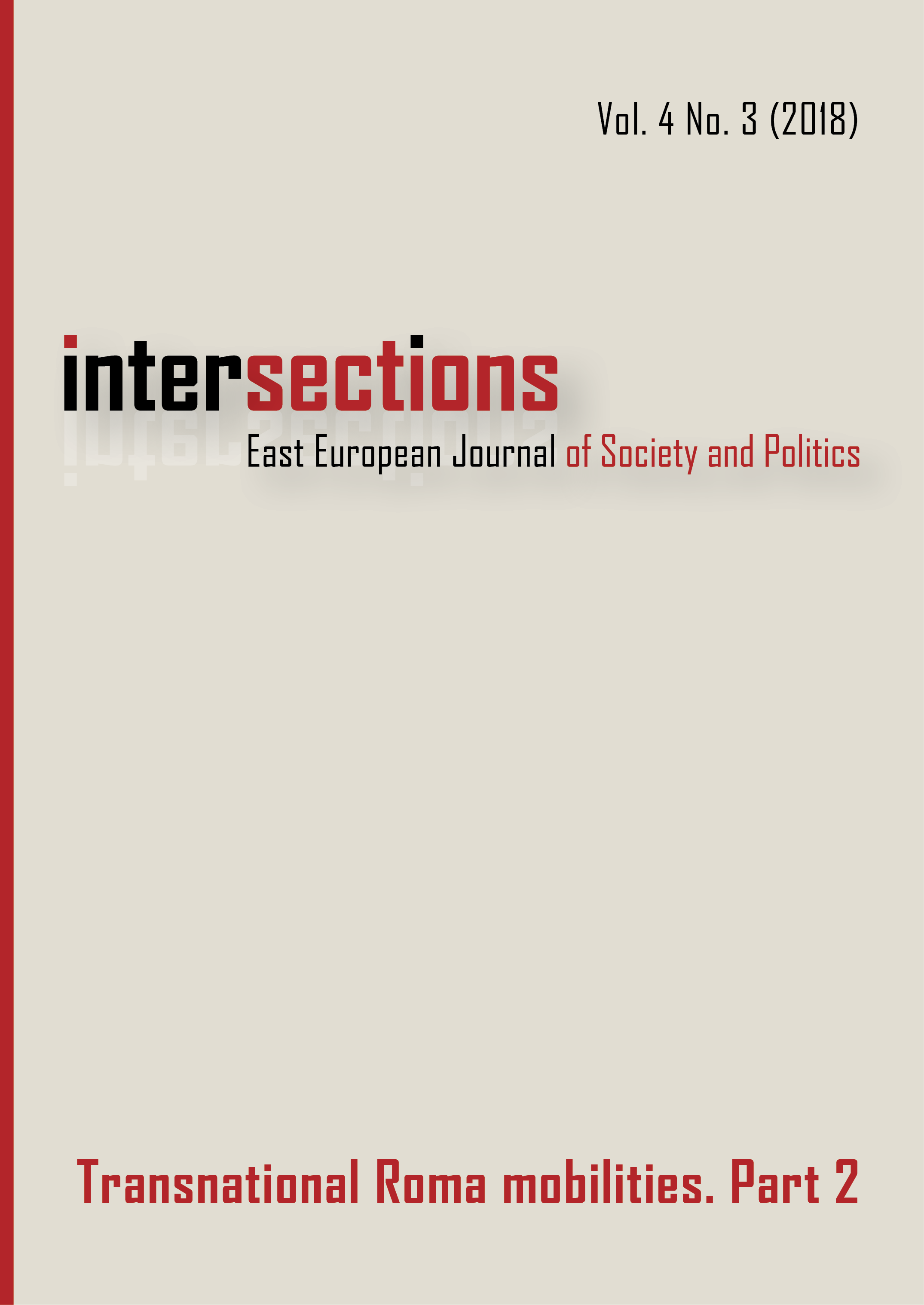Ritual Spaces and Burial Places
International Migration and Transnational Change Among the Korturare Roma
DOI:
https://doi.org/10.17356/ieejsp.v4i3.378Abstract
The migration of Romanian Korturare is analyzed with a focus on the transformation of three aspects of their funerary practices: place of burial, multi-sited funeral celebrations, and the use of communication technologies. This ‘mortuary focus’, which has not previously been applied to studies of international Romani migration, provides a better understanding of the interaction between territorial attachment and international mobility patterns. Observations based on ethnographic fieldwork are complemented by an analysis of social media use, audiovisual materials and a sample of 69 deaths. Localities of origin continue to be the preferred place for burial and collective memorialization, while funerals become multi-sited, involving both host towns and hometowns. The mediatization of death practices reinforces both of these tendencies. The transformation reflects the role of Korturare social organization in the migration process. The broad and densely nested family networks of the Korturare keep the possibility of multidirectional migration open and act as an adaptive resource by reproducing community life abroad. At the same time, they preserve the localities of origin as the common and privileged territory of the symbolic reproduction of family ties.

Downloads
Published
How to Cite
Issue
Section
License
Copyright Notice
Authors who publish with this journal agree to the following terms:
Authors retain copyright and grant the journal right of first publication, with the work three months after publication simultaneously licensed under a Creative Commons Attribution License that allows others to share the work with an acknowledgement of the work's authorship and initial publication in this journal.
Authors are able to enter into separate, additional contractual arrangements for the non-exclusive distribution of the journal's published version of the work (e.g., post it to an institutional repository or publish it in a book), with an acknowledgement of its initial publication in this journal. This acknowledgement is not automatic, it should be asked from the editors and can usually be obtained one year after its first publication in the journal.



